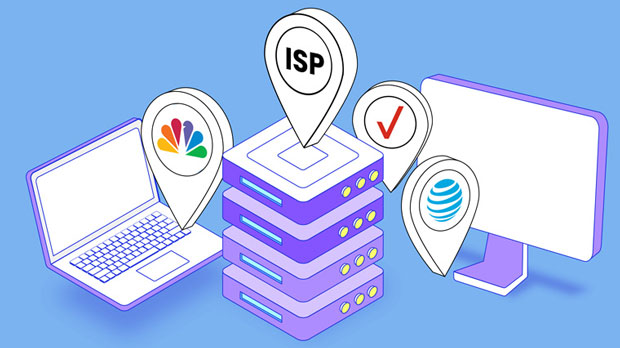Does the SOCKS5 proxy service cost the same for Windows and Mac systems?
When considering socks5 proxy services for both Windows and Mac operating systems, one common question arises: are the costs for these two platforms the same? The answer is not straightforward, as several factors influence the pricing. Although the technology behind socks5 proxies remains the same across platforms, pricing can vary based on factors such as platform-specific software compatibility, user demand, geographical pricing differences, and other technical considerations. Understanding these distinctions is key to making an informed decision about SOCKS5 proxy services for either system. In this article, we will explore how costs can differ and the reasons behind these variations. Understanding SOCKS5 Proxy ServicesSOCKS5 (Socket Secure 5) is a proxy protocol that allows clients to route their internet traffic through a server, masking their IP addresses and enhancing privacy. Unlike HTTP or HTTPS proxies, which work specifically for web traffic, SOCKS5 is more versatile, supporting a variety of protocols and applications, such as FTP, P2P file sharing, and video streaming. While SOCKS5 proxy services offer several advantages, the core technology behind SOCKS5 proxies does not change whether the client is using Windows, Mac, or any other operating system. However, various platform-specific factors can impact the cost and efficiency of using a SOCKS5 proxy service.Factors Affecting Pricing for SOCKS5 Proxy Services on Windows and MacThe cost of SOCKS5 proxy services typically depends on a few key factors, which may vary between Windows and Mac systems. These factors include:1. Software Compatibility and Optimization - For both Windows and Mac users, ensuring the SOCKS5 proxy software is fully compatible with their operating system is critical. While SOCKS5 proxies themselves are independent of operating systems, the software or application used to connect to the proxy might be optimized differently for each platform. Windows, being the dominant OS for personal computing, generally has a wider range of proxy applications available, which might lead to more competitive pricing and more frequent updates. - Mac users, on the other hand, may find fewer options for proxy software, and those available might be priced higher due to less competition in the Mac ecosystem.2. User Demand and Market Segmentation - In general, the user base for Windows is much larger than that for Mac. As a result, service providers may price their SOCKS5 proxy services more competitively for Windows users, given the higher demand and larger customer base. This could lead to lower overall prices for Windows users, as providers are able to spread costs across a larger pool of customers. - Mac users represent a smaller, but often more specialized, segment of the market. The smaller user base and the perceived premium nature of the Mac ecosystem may lead to higher costs for SOCKS5 services. Additionally, some proxy service providers might target specific niches such as creative professionals, which could also influence pricing strategies.3. Geographical Pricing Variations - Another factor influencing the cost of SOCKS5 proxy services for Windows and Mac users is geographical pricing. Prices for proxy services can vary depending on the country or region in which the user is located. For instance, users in regions with higher demand or greater disposable income (such as North America or Europe) may see higher prices compared to users in less economically developed regions. - Service providers may also adjust pricing based on the platform. For example, some proxies may have region-specific pricing for Windows users while offering different rates for Mac users. The difference is often not substantial but can still impact a user's decision depending on the region.4. Service Features and Customization Options - SOCKS5 proxy providers often offer tiered pricing based on additional features, such as enhanced encryption, advanced privacy protections, or unlimited bandwidth. While these features may be available for both Windows and Mac users, the ability to customize these features can differ based on the operating system. - On Windows, where there are typically more third-party software options, users may be able to integrate the proxy service with other tools at a lower cost. In contrast, Mac users might find that their options for customization are more limited, potentially leading to higher prices for specialized features or advanced configurations.5. Technical Support and Service Quality - Another aspect to consider is the quality of customer support provided by the SOCKS5 proxy service. Some service providers might offer better technical support for Windows due to the larger customer base, while others might prioritize Mac users, offering them more personalized support. - Generally speaking, Windows users might have more readily available troubleshooting resources, thanks to the larger community of users. However, Mac users could face higher costs for premium customer support due to the specialized nature of the Mac platform.Price Comparison for SOCKS5 Proxy Services on Windows and MacWhile the core SOCKS5 technology remains the same regardless of whether you're using Windows or Mac, the final price you pay can still differ. Below, we outline some general trends:1. Windows-based Pricing - For Windows, users typically have access to a larger pool of budget-friendly options. As Windows is the most widely used operating system in the world, service providers often offer a range of pricing tiers, from basic packages suitable for casual users to premium plans designed for heavy-duty tasks such as streaming, gaming, or data scraping. - Due to the high competition among providers, users can often find deals or discounts on Windows-based services. These services may include additional features such as unlimited bandwidth, enhanced privacy features, or dedicated customer support.2. Mac-based Pricing - For Mac users, the pricing can be slightly higher, particularly if the provider targets a more specialized or niche audience. Mac users may have to pay more for the same service that is available at a lower price for Windows users. This can be due to factors such as lower competition, higher demand for premium services, and the perceived “premium” nature of the Mac operating system. - Some providers also offer plans specifically designed for professionals who use Mac devices for work, such as designers, developers, or content creators. These plans may come with additional features such as enhanced security, higher speeds, and priority customer support, which can drive up the cost.Conclusion: Are SOCKS5 Proxy Costs the Same for Windows and Mac?In conclusion, while the underlying technology behind SOCKS5 proxy services remains the same for both Windows and Mac operating systems, the costs associated with these services can differ. Factors such as software compatibility, user demand, geographical variations, service features, and customer support all play a role in determining the final price. Windows users may benefit from a wider range of budget-friendly options, while Mac users might encounter slightly higher prices due to the more niche nature of the Mac ecosystem.Ultimately, whether the cost difference between the two platforms is significant depends on the specific proxy service provider and the features being offered. It’s essential for users to assess their own needs—such as the level of privacy, speed, and support they require—before making a decision. By carefully considering these factors, both Windows and Mac users can find the best SOCKS5 proxy solution that suits their budget and requirements.
2025-01-08

























































